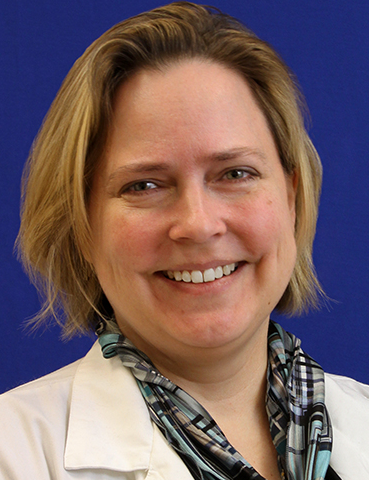Thursday, 25 February 2021 |
Please View Details of Day 1 and Day 2 Morning Under the EV Track Website Agenda |
| |
Friday, 26 February 2021 |
Conference is Powered by the Zoom Platform. All Times Listed are US Eastern Time. |
| | 11:45 |  Microfluidics – Changing the Game in Biomarker Detection Microfluidics – Changing the Game in Biomarker Detection
Magdalena Schimke, Business Development and Sales, Single Cell Diagnostics, STRATEC Consumables GmbH
Finding existing and novel biomarkers in circulating fluids via liquid biopsies is a strongly emerging field in research and technology development. It aims on finding extremely rare molecules, cells or sub-cellular compartments in body fluids that allow a diagnose of a disease, its progress and monitoring of therapy success. STRATEC here presents examples of novel technologies, relevant regulatory aspects, ways to make them accessible for the medical market as well as future perspectives.
| 12:15 | Liquid Biopsy -- Exosomal microRNA Biomarker Signatures in Various Stages of Pneumonia in Covid-19 Patients
Michael Pfaffl, Professor, Technical University of Munich, Germany
| 12:45 | Lunch Break | 13:45 |  | Keynote Presentation Repurposing Microfluidic Tools for the Analysis of Liquid Biopsy Markers for COVID-19 Diagnostics
Steve Soper, Foundation Distinguished Professor, Director, Center of BioModular Multi-Scale System for Precision Medicine, The University of Kansas, United States of America
Extracellular vesicles (EVs), which are sub-micrometer sized particles produced from biological cells, can be isolated from liquid biopsy samples and used to manage a variety of diseases including the oncology-related diseases as well as others. However, disease-associated EVs must first be isolated in high purity to secure quality molecular data because even non-diseased cells produce EVs that can mask subtle disease-related molecular alterations. We have developed a plastic microfluidic chip, which is injection molded, consisting of 1.5M micropillars decorated with affinity agents to allow for selecting EVs from plasma. We have repurposed this chip to select SARS-CoV-2 virus particles (VPs) directly from saliva. In this presentation, we discuss an assay that can accept saliva samples and search for VPs (VP selection chip) and then, count the number of VPs selected using a label-free approach; nano-Coulter Counter chip (nCC). The VP selection chip affinity targeted SARS-CoV-2 VPs using an aptamer surface immobilized to pillars contained within the chip that were directed against the SARS-CoV-2 Spike protein. The VP selection chip allowed for affinity loading up to 1010 SARS-CoV-2 VPs. Following selection (VP recovery >40%) and subsequent release (~89% efficiency) from the VP selection chip using a photocleavable linker and a blue-light LED, the selected particles were counted using the nCC chip. For high throughput VP counting, 5 nCCs were placed in parallel and offered 100% detection efficiency for VPs travelling through a 200 nm in-plane pore. The entire assay could be completed in ~20 min with full process automation. In addition, the selected particles were available for analysis of their RNA content using RT-qPCR. For a 20 sample set, RT-qPCR identified 4 samples of infected individuals and our assay was successful in identifying all 4 of those samples. The chips and controlling electronics could be packaged into a handheld instrument to allow for point-of-care testing or even at-home testing. |
| 14:30 |  | Keynote Presentation Proteases – A Promising and Untapped Group of Protein Biomarkers for a Wide Range of Disease Diagnostics
Michael Heller, Professor, Dept Bioengineering, University of California-San Diego, United States of America
Proteases represent a large class of enzymes that degrade proteins and have been associated with a wide range of diseases. These include: cardiovascular diseases; coagulation disorders; inflammatory diseases, diabetes, sepsis; infectious diseases and cancer. While proteases have seen some limited use in disease diagnostics, their full potential has not been exploited. Also, in most cases there detection is carried out using classical immunofluorescent antibody-protein binding reactions. Because they are catalyst which rapidly convert specific substrates into products, they offer an added advantage for signal amplification. At our UCSD lab we have capitalized on this property and developed rapid sample to answer protease assays based on fluorescent charge-changing peptide substrates. These assays can be carried our using very small volumes (5ul-10ul) of whole blood samples. No sample preparation is required and the fluorescent peptide products can be detected in about 30 minutes using simple mini-gel electrophoretic formats. By way of just one example we have shown elevated digestive proteolytic activity in the peripheral blood of individuals with Type-2 Diabetes. More recently we have preliminary results indicating the elevation of specific proteases in various cancers. The ultimate goal is to use our rapid charge-changing fluorescent peptide technology to fully exploit the promise of protease biomarkers for disease diagnostics, including cancer. |
| 15:15 |  | Keynote Presentation Exosome- and EV-based Liquid Biopsies: Where Are We and Where Are We Going?
Jennifer Jones, NIH Stadtman Investigator, Head of Transnational Nanobiology, Laboratory of Pathology, Center for Cancer Research, National Cancer Institute, United States of America
|
| 16:00 |  | Keynote Presentation Tools and Methods for Isolation of Extracellular vesicles and their Downstream Analysis
Utkan Demirci, Professor, Stanford University School of Medicine, United States of America
|
| 16:45 |  | Keynote Presentation Closing Keynote Presentation
Jan Lötvall, Professor, University of Gothenburg; Founding President of ISEV; Editor-in-Chief, Journal of Extracellular Vesicles, Sweden
|
| 17:30 | Close of Day 2 of the Conference |
|
